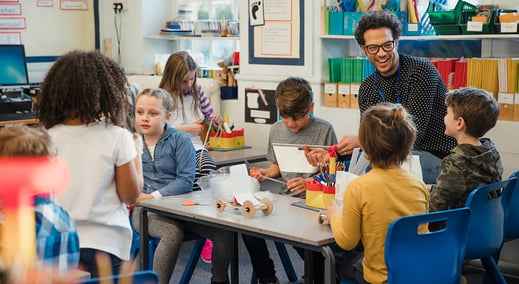
CLASS allows us to quantify the quality of teacher-child interactions—and that is a powerful thing. But improving child outcomes takes more than just data collection; it’s what you do with the data that really matters.
Here are 4 things you should know about using data to improve student outcomes.
1. Data Can (and Should!) Inform Professional Development
During my time at Teachstone, I’ve seen too many programs use CLASS observation data solely to provide summative feedback. Although this is certainly a valid use of data, the most successful coaches I’ve spoken with use CLASS data to provide individualized, formative feedback to teachers. They also use that data to determine what sorts of professional development will be most relevant and impactful to individual teachers. Of course, scheduling regular CLASS observations at the individual teacher level can be both time and cost prohibitive, which leads me to my next point ...
2. Anecdotal Data is Important, Too!
It is critical to establish a systematic cycle for teacher improvement throughout the year in order to achieve incremental gains. We recommend conducting regular observations that will inform coaching and professional development. Generally, the more formal observations a program conducts, the better.
But less formal, anecdotal observations are important, too! Coaches collect anecdotal observation notes in many ways. For example, a coach might offer to watch a particular lesson for the teacher’s use of Language Modeling. For the teacher, this provides an objective, specific, and detailed account of her interactions in this dimension (without the added stress of being assigned a score). This also allows the coach to better provide individualized support.
3. Data can be punitive or constructive—not both
Let’s be honest—if you’re trying to establish a supportive, coaching relationship with a teacher, that’s going to be really difficult if you’re also planning to use their observation data as a “gotcha” measure or to call out their “problem areas.” When using CLASS data in a formative way—to differentiate support, goals, and professional development plans—it must be associated with achievement, rather than punishment.
4. Data Tells a Story
The best data tells a story—and when it comes to CLASS data—that is the story of improving interactions, and ultimately, outcomes for children. While data can be used at the individual teacher level to differentiate coaching and professional development, administrators also have stories to tell. For example, how has our new coaching initiative impacted CLASS scores over time? Who are the standout teachers in my organization? How well are we achieving our goals this year?
Data is a critical tool from the individual teacher level all the way to highest levels of our educational leadership. Collecting data is helpful but it's even better when it's used to inform professional development for teachers. Check out our CLASS Data Collection webinar series where we discuss developing and setting up a data collection system, and best practices for reporting data.
Editor's note: This post was originally published in November 2017 and has been updated for accuracy and comprehensiveness.
